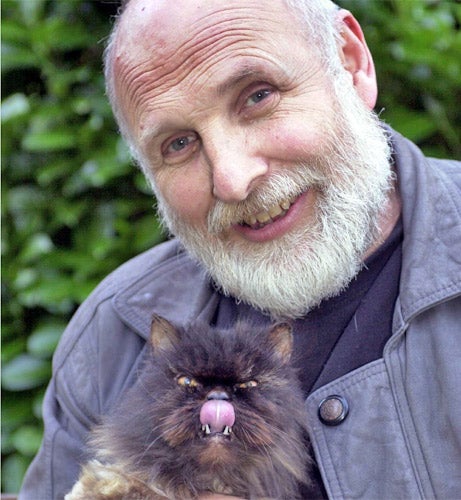A maverick "lunar forecaster" who claims to have predicted both New Zealand's major recent earthquakes provoked fear and outrage when he warned that another devastating jolt would strike Christchurch last Sunday. Scientists made a public bet that it wouldn't – and were then left exasperated as the city was shaken by the biggest aftershock since the February catastrophe.
Ken Ring, a grey-bearded, hitherto obscure fishing commentator, has become the subject of heated public debate in recent months over his earthquake predictions, based on the pseudoscientific belief that quakes are caused by the gravitational pull of the Moon on tectonic plates.
Although rubbished by seismologists, the theory gained traction as word spread that the "Moon Man" appeared to have predicted both the initial September quake, and the February disaster which killed about 182 people.
Gaining support from Christchurch residents frustrated that science had been unable to usefully predict the killer aftershock, Mr Ring used his new platform to warn of another impending giant quake – one that "could be another for the history books" – on the morning of 20 March, as the Moon passed close to the Earth. "The killer is still loose on the streets, the one that strikes on full moons," he wrote.
His warnings to stay away last weekend prompted some traumatised residents to flee their homes, and played on the nerves of many who remained. "Even people who would normally discard it or say it's only superstition are becoming extremely fearful," said Lynette Hutson, co-ordinator of the Salvation Army's counselling service.
In response, scientists, politicians and sections of the media moved to calm the hysteria. Current affairs broadcaster John Campbell savaged Mr Ring in a primetime interview which was roundly criticised as unfairly hostile, and seemed only to create sympathy for the "Moon man".
On Sunday, a group of geologists, engineers, and a cabinet minister with a PhD in geotechnical engineering gathered at a publicity-courting "non-event", holding a lunch in one of Christchurch's oldest, tallest buildings, at the time the "7 plus" doomsday quake was supposed to strike.
The lunch passed without incident. The sceptics were satisfied. But that night, at 9.47pm, the city was shaken by a 5.1-magnitude aftershock. It was about a thousand times less powerful than the killer that Mr Ring had prophesied, and it came 10 hours late. But it was the biggest aftershock since the February disaster and, for many of Mr Ring's supporters, it came as the most public of vindications.
"I must admit I spent Sunday hoping there wasn't going to be an earthquake like that," says Dr Marc Wilson, a psychology lecturer who was one of the scientists to speak out against Mr Ring. He can understand why some have read Sunday's events as bolstering Mr Ring's credibility, saying the large, unfortunately timed aftershock had only complicated the picture for the public. But that response was entirely in keeping with what the scientists predicted.
"Whatever the biggest earthquake was on Sunday would have been pointed to as the event," he says. Sunday's quake conformed to the expected pattern of aftershocks, and was just one of more than 20 of a similar size since the September quake. "We've been having a magnitude 4 earthquake about once a day," said Dr Wilson.
Dr Mark Quigley, a lecturer in active tectonics and geomorphology, said controversial research had argued there might be a small correlation – perhaps an increased earthquake likelihood of up to 1 per cent – between smaller continental quakes and "solid Earth tides", the changes in the planet's shape due to the gravitational pull of the Moon.
But there was no evidence which supported Mr Ring's hypothesis. Typical earthquake-induced stress changes were 100 to 1,000 times greater than those induced by the tides, he said. "Vague quotes about dates of 'increased' activity plus or minus several days, without magnitudes, locations, and exact times do not constitute prediction," he said.
Mr Ring has gone to ground over critical media coverage, including revelations he previously worked as a party clown and magician, and once wrote a book about palmistry for cats. He did not reply to questions.
Dr Wilson said he could understand the appeal of pseudoscience, as traumatised groups have a tendency to look for things that make sense of their experience. "The things he's saying are reasonably easy to digest," he said. "And science, when you get down to it, is hard to break down into soundbite-sized chunks that everyone can understand."

Join our commenting forum
Join thought-provoking conversations, follow other Independent readers and see their replies
Comments